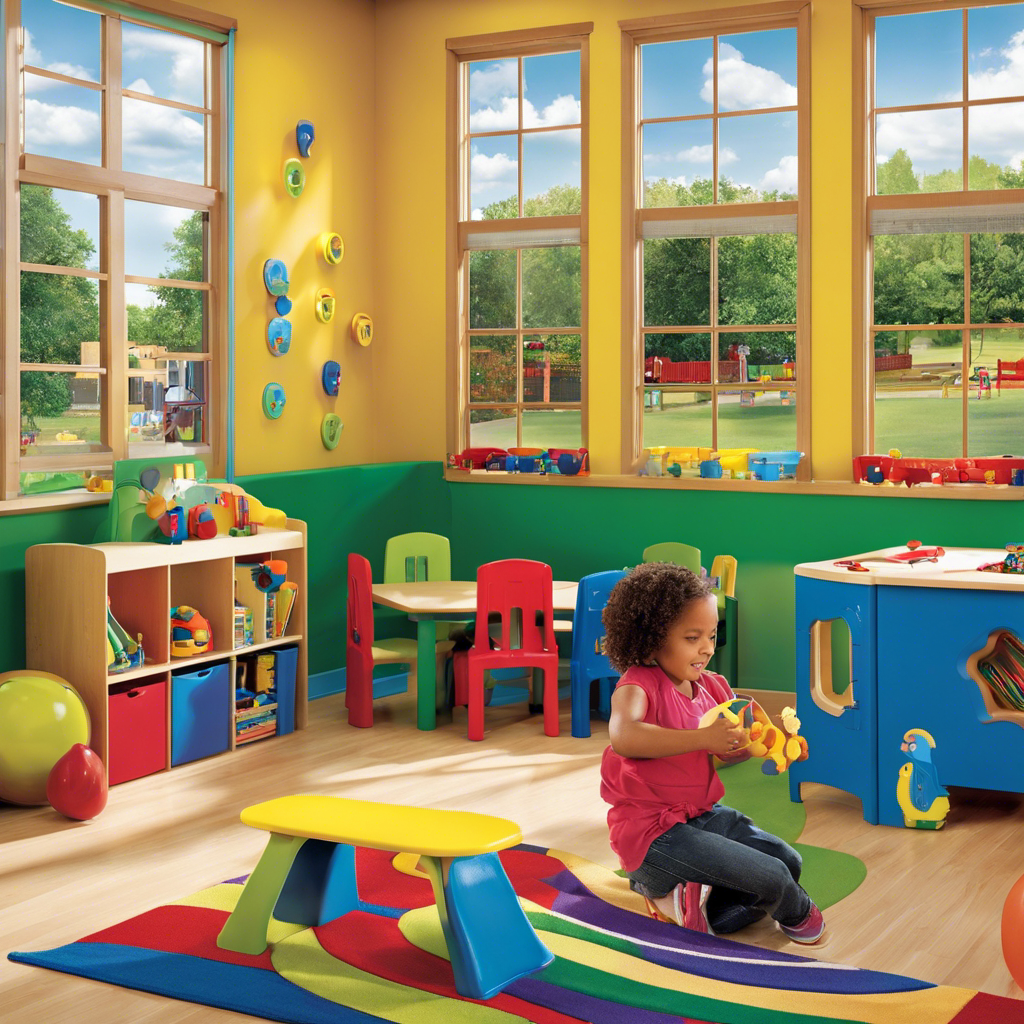Have you ever noticed that when the weather becomes warm and the flowers start to bloom, your child’s allergies seem to go into overdrive? It’s as if their little noses become an all-you-can-sniff buffet for pollen and other allergens.
Well, just like how a bee is drawn to a vibrant flower, allergens are irresistibly attracted to the HVAC systems in Tulsa’s daycares. But what exactly is the link between HVAC and allergies? And more importantly, what can be done to alleviate this issue and keep our little ones sniffle-free?
Key Takeaways
- Pollen, dust mites, and pet dander are common allergens found in daycare HVAC systems.
- Proper air filtration and regular maintenance of the HVAC system are crucial in trapping and removing allergens.
- Improper maintenance and filtration can lead to the circulation of allergens throughout the daycare facility.
- Upgrading the HVAC system with high-efficiency filters can significantly reduce indoor air pollution and the risk of allergies among children.
Common Allergens Found in Daycare HVAC Systems
Common allergens can be frequently found in the HVAC systems of daycare facilities. It’s crucial for parents and daycare providers to be aware of these allergens to ensure the health and safety of the children.
One of the key factors in preventing the spread of allergens is proper air filtration. HVAC systems equipped with high-quality air filters can effectively trap and remove allergens such as pollen, dust mites, and pet dander from the air.
Additionally, regular maintenance and cleaning of the HVAC system can help prevent the growth of mold, another common allergen. Mold thrives in damp environments, so keeping the HVAC system dry and well-maintained is essential.
How HVAC Systems Contribute to Allergies in Daycares
HVAC systems in daycares can contribute to allergies by circulating allergens throughout the facility if proper maintenance and filtration measures aren’t in place. One key factor in allergen removal is the HVAC filters. These filters are responsible for trapping and removing allergens from the air. However, if the filters aren’t regularly cleaned or replaced, they can become clogged, allowing allergens to pass through and be recirculated.
Another important aspect is the HVAC system design and airflow management in daycares. Proper design ensures that the airflow is directed away from occupants and towards the filters, maximizing allergen removal. It’s crucial to have a well-designed system that promotes efficient airflow and prevents the spread of allergens.
To mitigate allergies in daycares, it’s essential to regularly maintain and replace HVAC filters. Additionally, investing in a well-designed HVAC system with proper airflow management can significantly reduce the circulation of allergens, ensuring a healthier environment for the children in your daycare facility.
The Importance of HVAC Maintenance for Allergy Prevention
Regular HVAC maintenance is essential for preventing allergies and maintaining a healthy environment. By regularly maintaining your HVAC system, you can enjoy the benefits of allergy prevention.
One important aspect of HVAC maintenance is the regular replacement and cleaning of filters. HVAC filters play a crucial role in reducing allergens in the air by capturing dust, pollen, and other particles that can trigger allergic reactions. Over time, these filters can become clogged and less effective, allowing allergens to circulate throughout your space. By scheduling regular maintenance, you ensure that your filters are clean and functioning optimally, providing you with cleaner air and reducing the risk of allergies.
Additionally, regular HVAC maintenance includes cleaning and inspecting the various components of your system, ensuring proper airflow and preventing the accumulation of allergens.
Don’t overlook the importance of HVAC maintenance in preventing allergies and creating a healthy environment for yourself and those around you.
Improving Indoor Air Quality in Daycares Through HVAC Upgrades
To further enhance the air quality in daycares, it’s crucial to consider upgrading the HVAC system for improved indoor air quality.
Daycares are prone to indoor air pollution due to various factors such as increased occupancy, frequent cleaning activities, and the presence of allergens brought in by children.
Upgrading the HVAC system can significantly reduce the levels of indoor air pollution and create a healthier environment for both children and staff. One effective way to achieve this is through HVAC filter upgrades.
Upgrading the filters to high-efficiency ones can help trap and remove airborne particles, allergens, and pollutants, ensuring cleaner and fresher air.
These upgrades can also help in reducing the risk of respiratory illnesses and allergies among children, fostering a sense of belonging and safety in the daycare environment.
Tips for Parents to Minimize Allergies in Daycare Settings
Parents can take certain measures to minimize allergies in daycare settings. Here are some useful tips for parents to consider:
-
Communication: Inform the daycare staff about your child’s allergies, triggers, and any necessary medications. Regularly update them on any changes.
-
Allergy Action Plan: Work with your child’s healthcare provider to create an allergy action plan. Share this plan with the daycare staff to ensure they’re aware of necessary precautions and emergency procedures.
-
Allergen-Free Snacks: Provide allergen-free snacks for your child to avoid accidental exposure to allergens. Label the snacks clearly and inform the daycare staff about any dietary restrictions.
-
Cleaning and Ventilation: Ask the daycare about their cleaning practices and ventilation systems. Ensure that regular cleaning is done to minimize dust, pet dander, and other allergens. Request the use of HEPA air filters in the HVAC system.
-
Medication and Supplies: Ensure that your child’s allergy medication is properly labeled and stored at the daycare. Provide necessary supplies like epinephrine auto-injectors or inhalers if required.
Frequently Asked Questions
Are All HVAC Systems in Daycare Settings Equally Prone to Allergen Buildup?
Are all HVAC systems in daycare settings equally prone to allergen buildup? Yes, there are alternative solutions to HVAC systems in daycare settings. Additionally, there is a correlation between HVAC systems and respiratory illnesses in children.
What Are Some Common Signs That a Daycare’s HVAC System May Be Contributing to Allergies?
If you’re wondering how to identify signs of allergies caused by HVAC systems in daycares, common symptoms include sneezing, coughing, itchy eyes, and congestion. Improving indoor air quality can be achieved by implementing additional measures beyond relying solely on HVAC systems.
Can Regular HVAC Maintenance Completely Eliminate Allergens From Daycare Settings?
Regular HVAC maintenance can significantly improve indoor air quality in daycare settings, reducing the presence of allergens. While it may not completely eliminate all allergens, it is an effective measure to create a healthier environment for children.
Are There Any Specific HVAC Upgrades That Are More Effective in Improving Indoor Air Quality in Daycares?
To improve indoor air quality in daycares, consider specific HVAC upgrades. Upgrades like air purifiers, high-efficiency filters, and UV germicidal lights can be more effective in reducing allergens and ensuring a healthier environment for children.
Besides HVAC, What Other Measures Can Parents Take to Minimize Allergies in Daycare Settings?
To minimize allergies in daycare settings, consider alternative methods and natural remedies. These can include using hypoallergenic bedding, implementing regular cleaning routines, and promoting good hygiene practices among the children.


